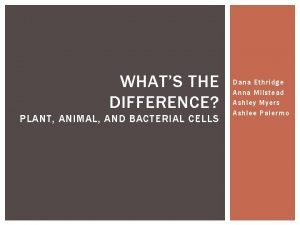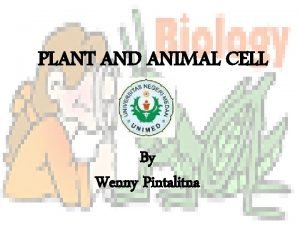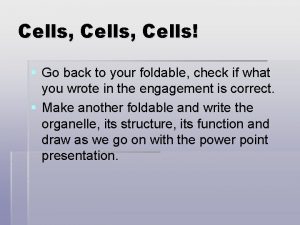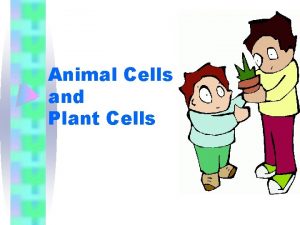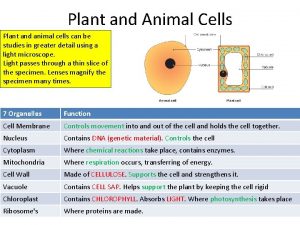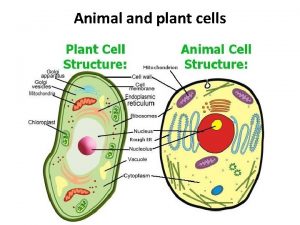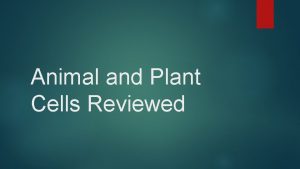Animal and Plant Cells Lesson 2 Structure of








- Slides: 8

Animal and Plant Cells Lesson 2

Structure of Animal Cells • Generally, each animal is made up of cell membrane and protoplasm. • Animal cells do not have cell walls and chloroplasts


Structure of Plant Cells • The basic structure of plant cells is similar to that of animal cells in having a cell membrane, cytoplasm, and a nucleus. • All plant cells have a cell wall which gives them an almost fixed shape. • Plant cells often have one large vacuole and have chloroplast.

CELL ORGANELLES FUNCTIONS ORGANELLE Cell Membrane PRESENT IN All cells FUNCTION Encloses the cytoplasm Controls the movement of materials in and out of cells Cell wall (a non-living layer Plant cells only of cellulose) Supports and gives shape to the cells Cytoplasm (jelly-like substance) All cells This is where chemical reactions take place inside the cell Stores dissolved material Nucleus Almost all cells (mature red Controls all cellular blood cells do not have activities nuclei) Vacuole (cell sap) Most plant cells and some animal cells Holds useful substances and wastes Supports the plat when it is full of water

ANIMAL CELL VS. PLANT CELL ASPECTS SHAPE: ANIMAL CELL Irregular, generally smaller PLANT CELL Regular, generally bigger SIZE: Small Big CHLOROPLAST: STARCH GRAINS: CELL WALL: VACUOLE: Absent Many small vacuole or none Cytoplasm fills the cell Present Found in cytoplasm Present Usually one and large Cytoplasm reduced to a thin lining CYTOPLASM:


Test Yourself

